04/30/2024
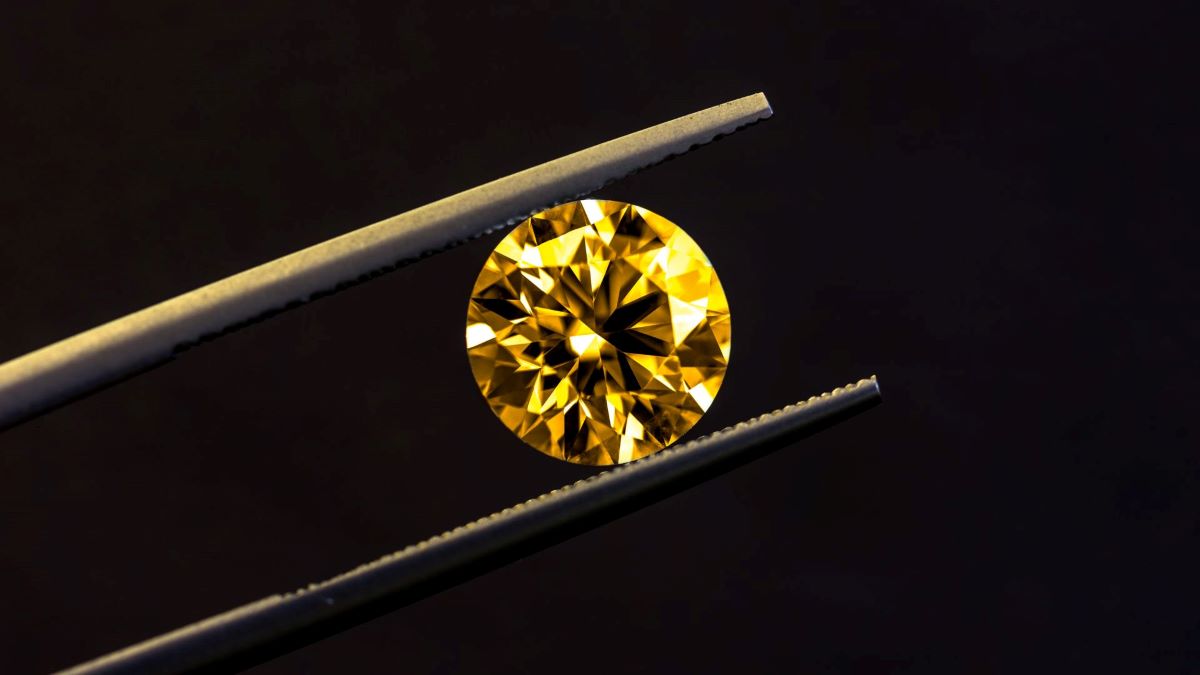
(A Comprehensive Overview)
They are a part of the fancy coloured diamond family. These gems are natural diamonds that, thanks to impurities trapped during their formation, show off a range of hues. Specifically, yellow diamonds owe their beautiful colour to a smidge of nitrogen snuggled inside their crystal structure.
Now, while regular white diamonds might sport a bit of a yellowish tinge, which isn't usually seen as a plus, once that yellow becomes the main event, the diamond steps into fancy coloured territory, and its value shoots up.
Yellow diamonds can also flaunt other hues like orange, green, and brown, but the crème de la crème are those with a pure, intense yellow shade. In these beauties, just the right amount of nitrogen grabs hold of blue light, making that yellow pop while keeping any secondary hues in check.
Colour: When it comes to white diamonds, they're graded on a colour scale ranging from D to Z. D signifies a diamond that's completely colourless, while Z indicates a noticeable brown or yellow tint. However, for fancy coloured diamonds, like striking yellows or vibrant blues, the grading scale is a whole new ballgame. Instead of focusing on absence of colour, it zeroes in on colour intensity. With seven distinct grades, each representing a unique range, this scale celebrates the spectrum of hues found in these exceptional gems. Here's a glimpse into the colourful world of fancy coloured diamond grading:
- Faint
- Very Light
- Light
- Fancy Light
- Fancy
- Fancy Intense
- Fancy Vivid, Fancy Deep or Fancy Dark
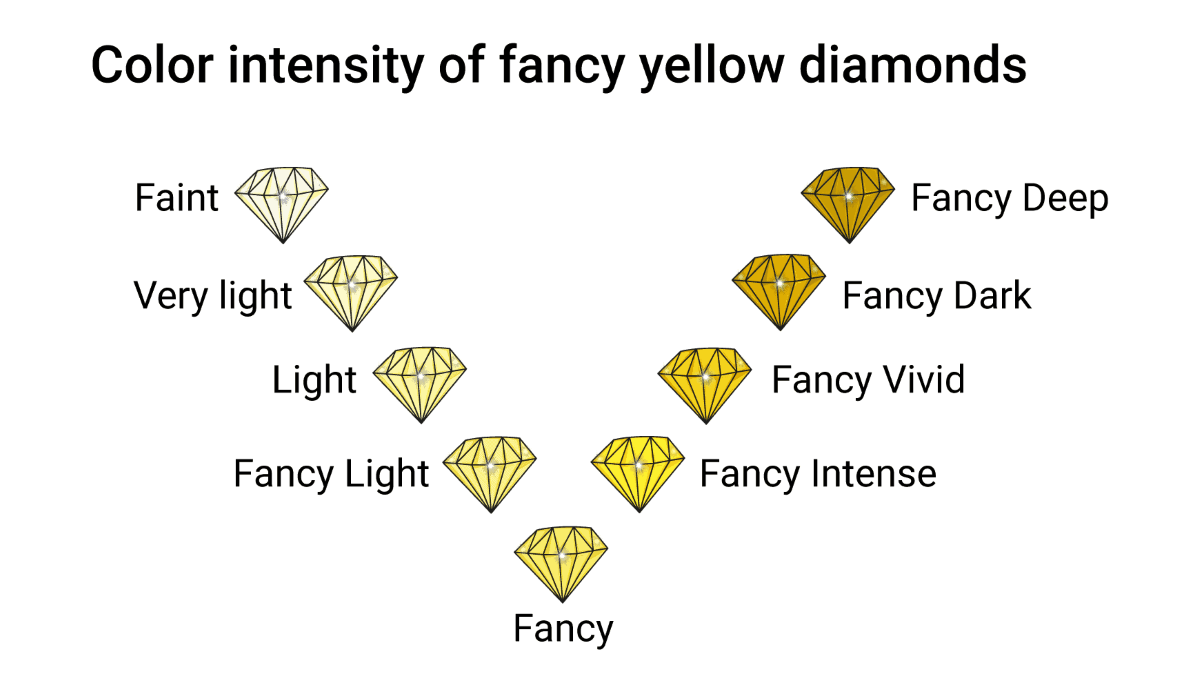
When it comes to yellow diamonds, we don't talk about "Faint," "Very Light," or "Light" varieties because those are considered less valuable on the traditional scale. Instead, we look at three main things to understand the colour: hue, saturation, and tone.
Hue is just the visible colour of the diamond. Yellow diamonds mostly show yellow, but often there's a hint of another colour, like orange, green, or brown. Sometimes, these secondary colours can make the yellow look even nicer, especially oranges.
Saturation is about how strong the colour is. Generally, the stronger the colour, the more the diamond is worth. So, the really vivid and deep colours are what people want and are willing to pay more for.
Tone is all about how light or dark the colour is. The ones in the middle, not too light and not too dark, are usually the most liked and valuable.
In the world of coloured diamonds, more colour usually means better. It's what makes them more desirable and valuable. But just like with clear diamonds, how much colour you like is totally up to you. Still, it's crucial to check out your yellow diamond in both natural and artificial light because the colour can look very different depending on the lighting.
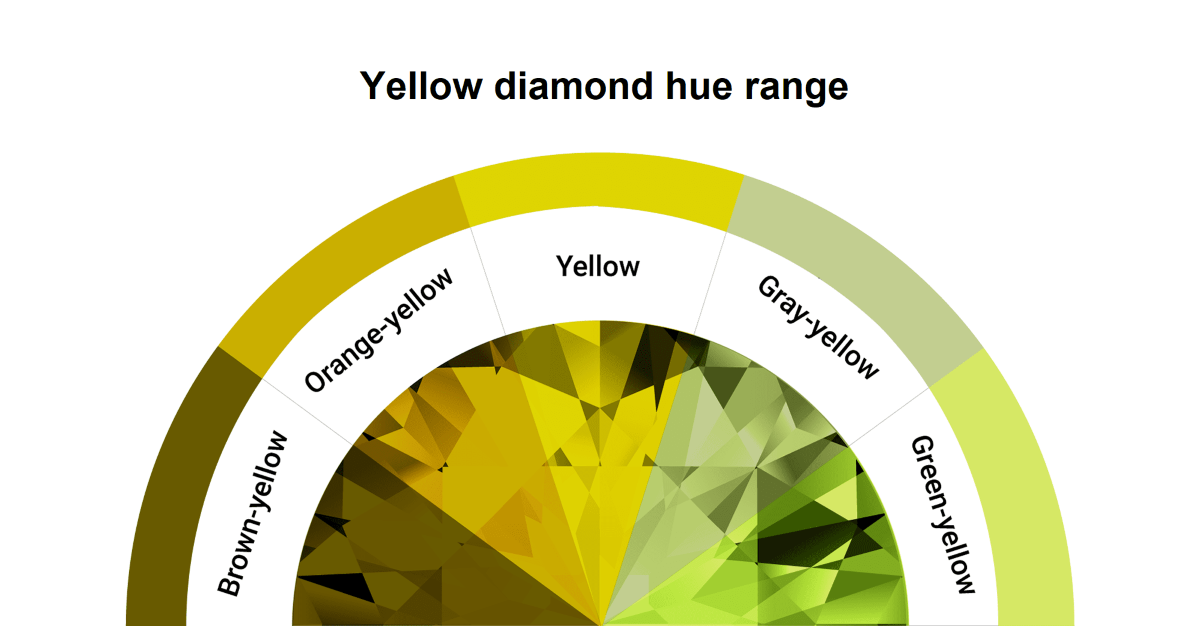
Clarity: When it comes to clarity, yellow diamonds follow the same grading system as clear diamonds. The fewer inclusions or flaws, the better the clarity grade. Yellow diamonds are often found in nature with relatively few imperfections, which is a big plus.
Coloured diamonds, including yellows, usually hide flaws pretty well because of their vibrant colouring. So, just like with clear diamonds, it's important to find a yellow diamond that looks clean to the naked eye, meaning it doesn't have any visible flaws or imperfections.
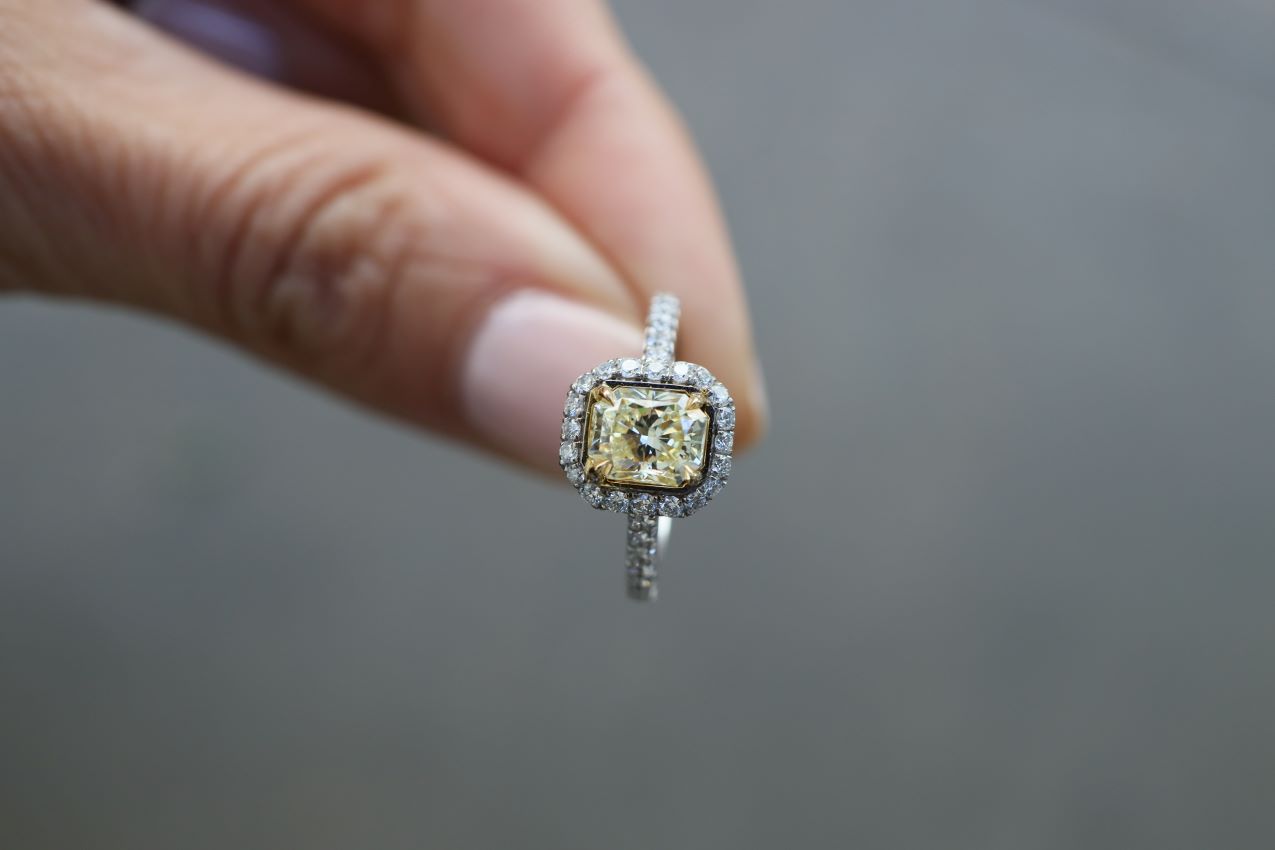
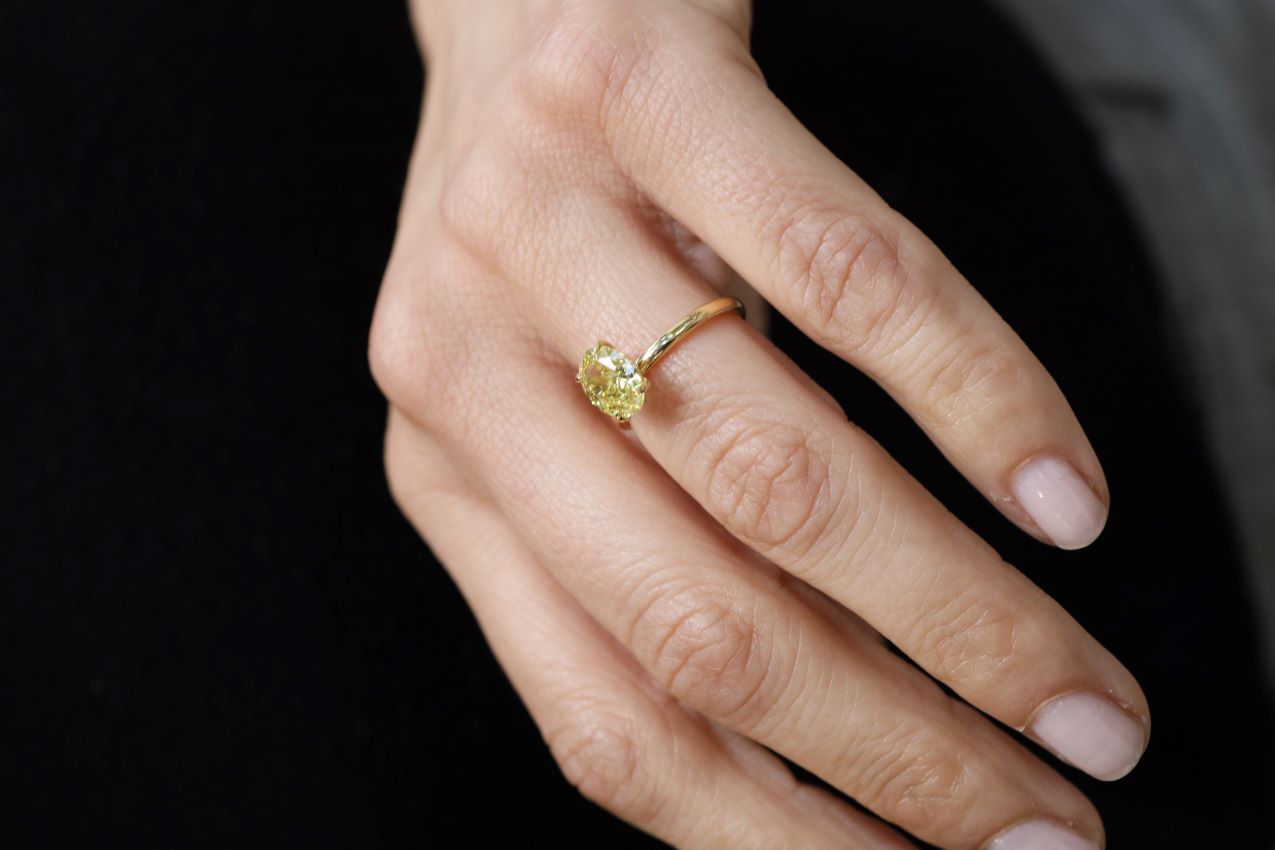
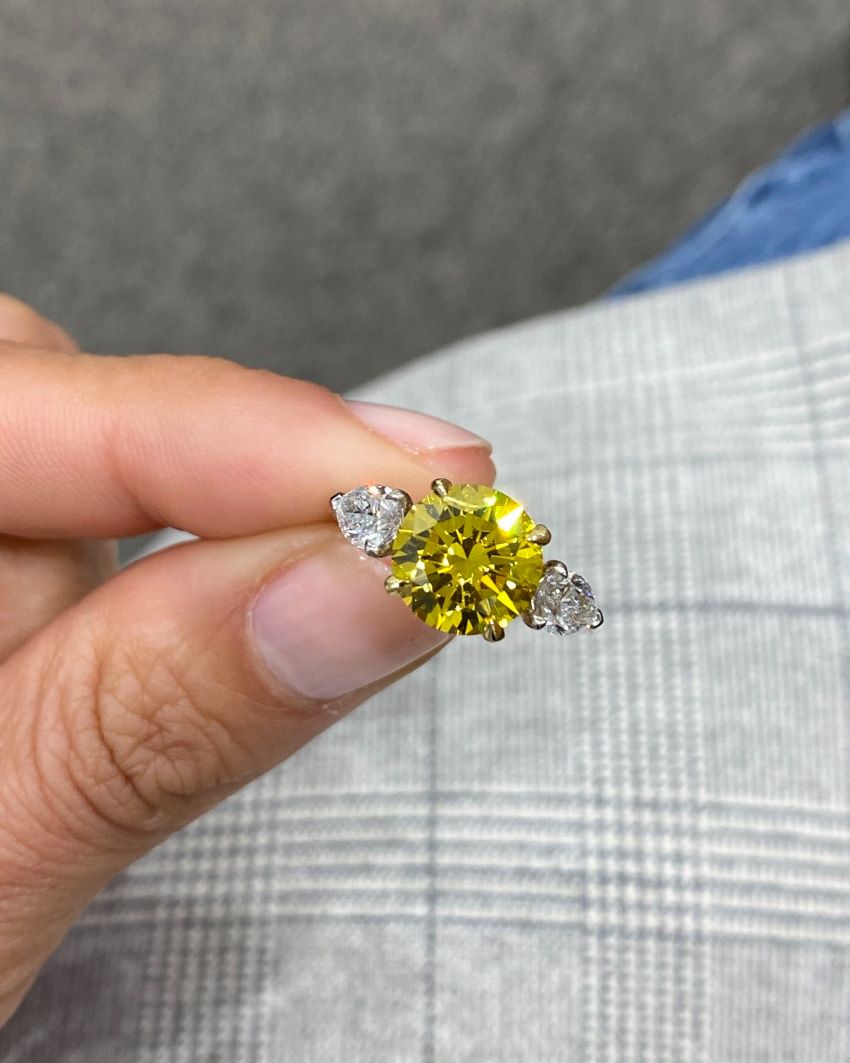
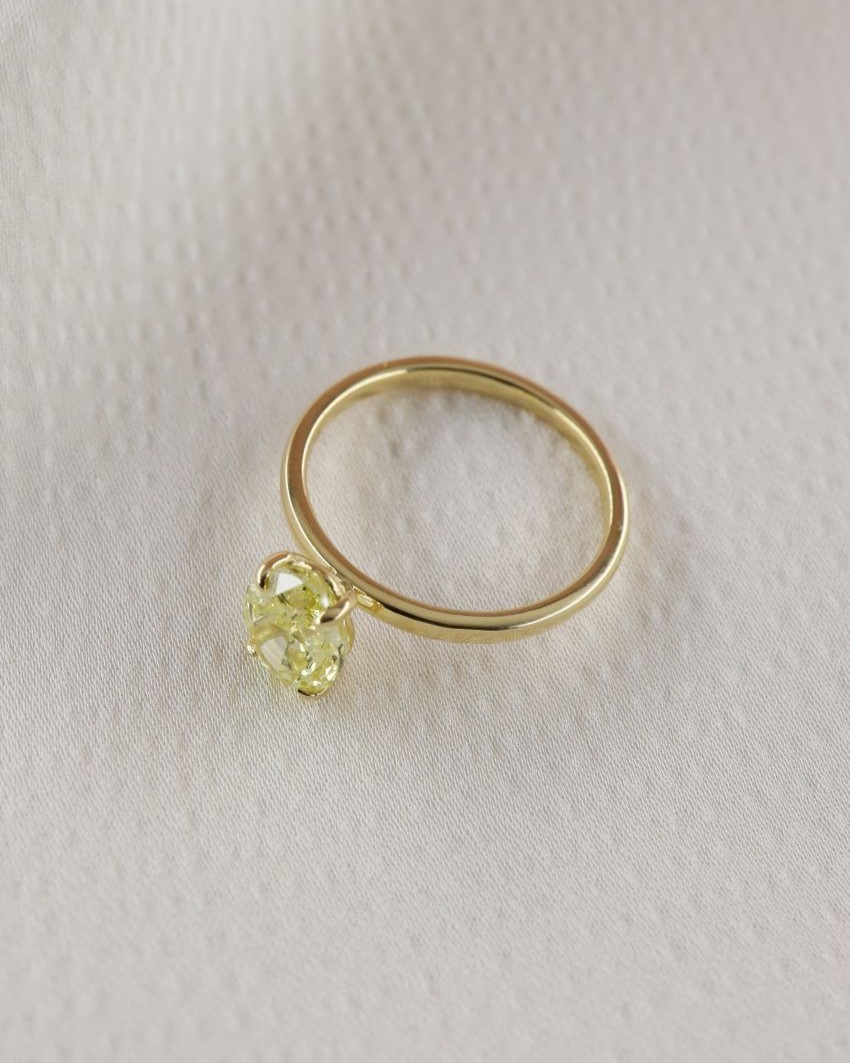
Cut: In terms of cut, any fancy coloured diamonds in general, there's a notable difference compared to clear, white diamonds. Traditionally, diamonds are cut to maximize sparkle and light, creating that iconic shimmer. But for yellow diamonds, colour takes the spotlight.
All fancy coloured diamonds are cut to make their colour pop, which also boosts their value. This means you might have to rethink how you judge the cut of a yellow diamond. Sure, an excellently cut yellow diamond will cost more, but if it doesn't have the colour you want, the cut won't matter much.
You don't necessarily need to aim for an excellent cut. Just steer clear of bad cuts and focus on very good to excellent symmetry and polish. Like with clarity, an excellent cut will cost more, and you probably won't notice big differences in the good to very good range if symmetry and polish are top-notch. Also, remember that radiant cuts can make the colour stand out more, while brilliant cuts might tone it down.
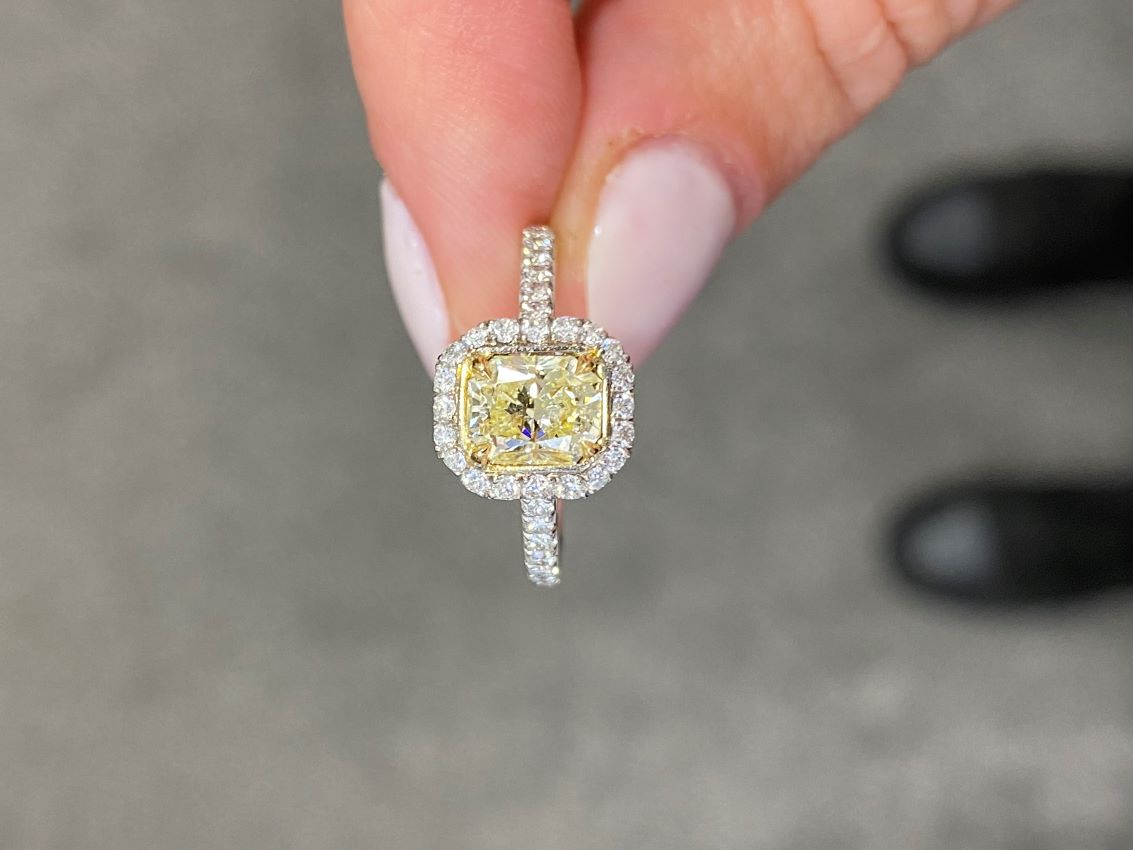
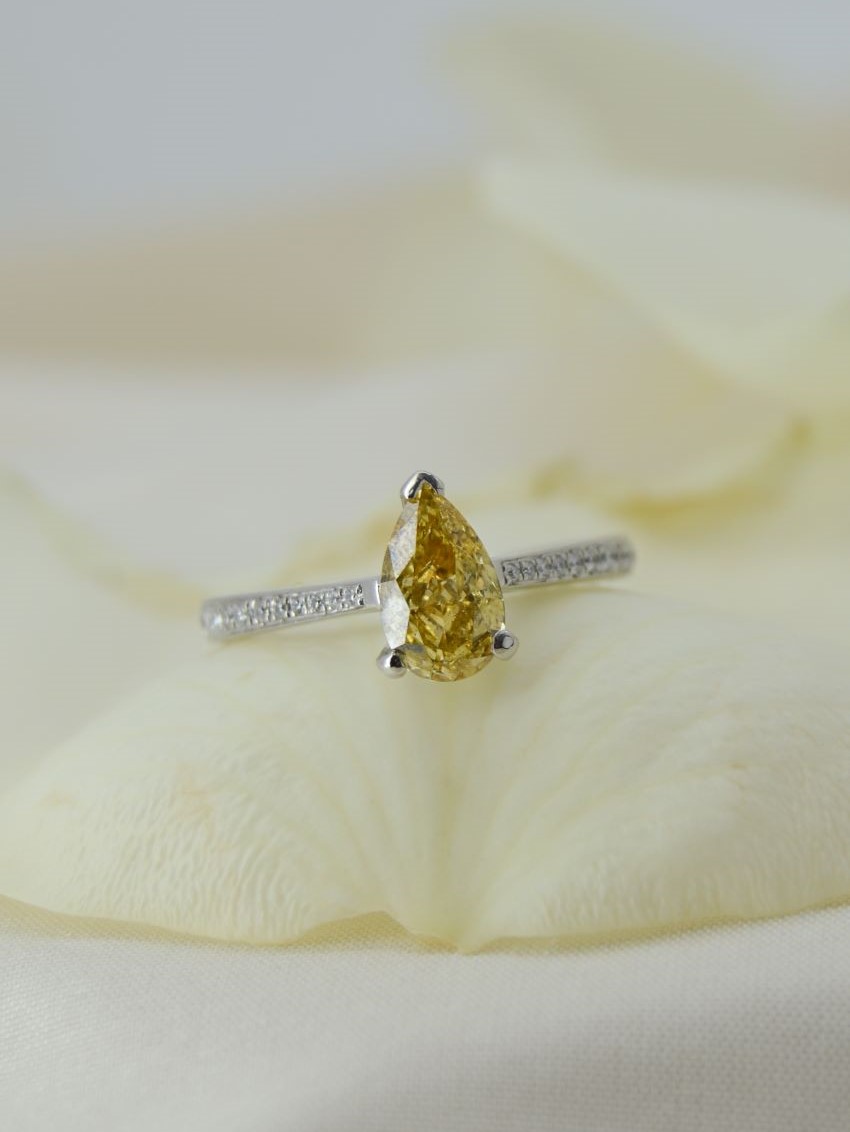
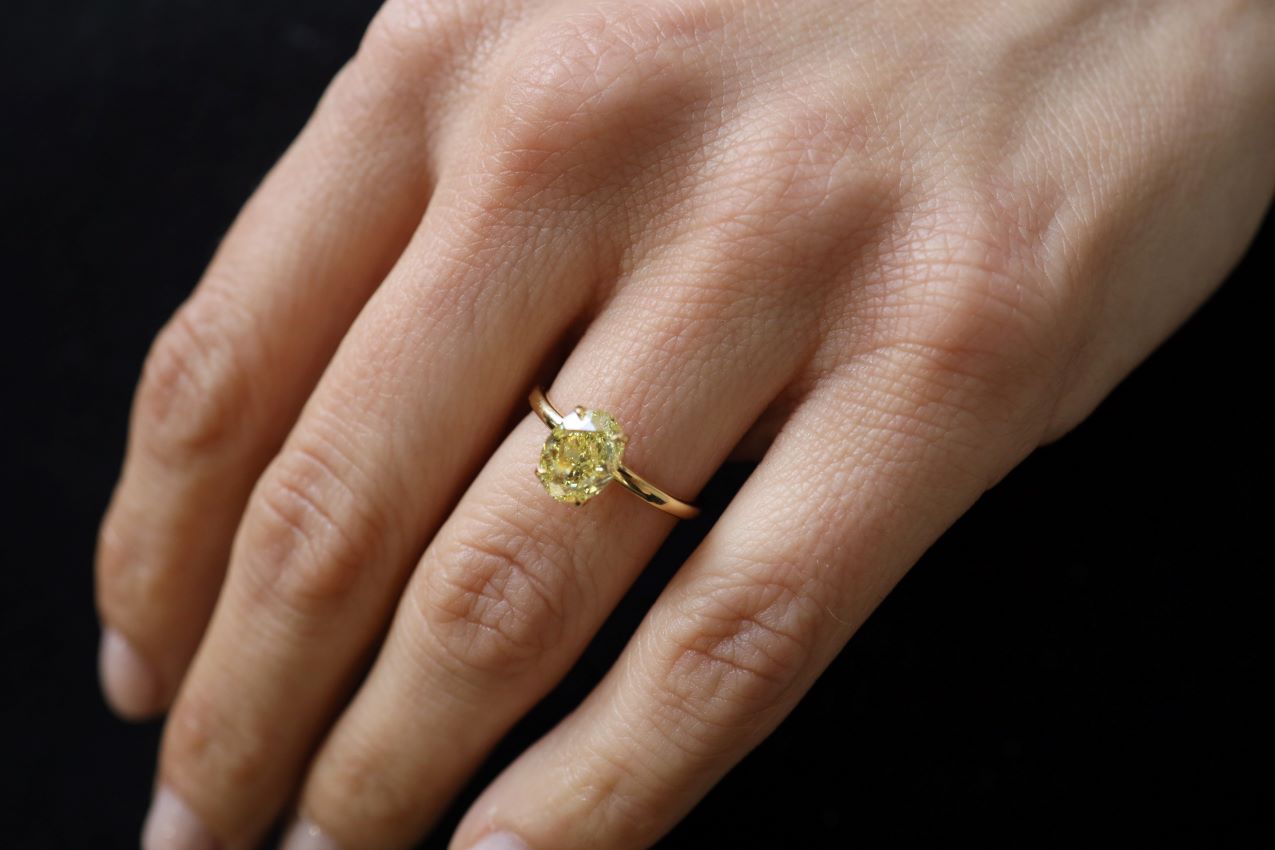
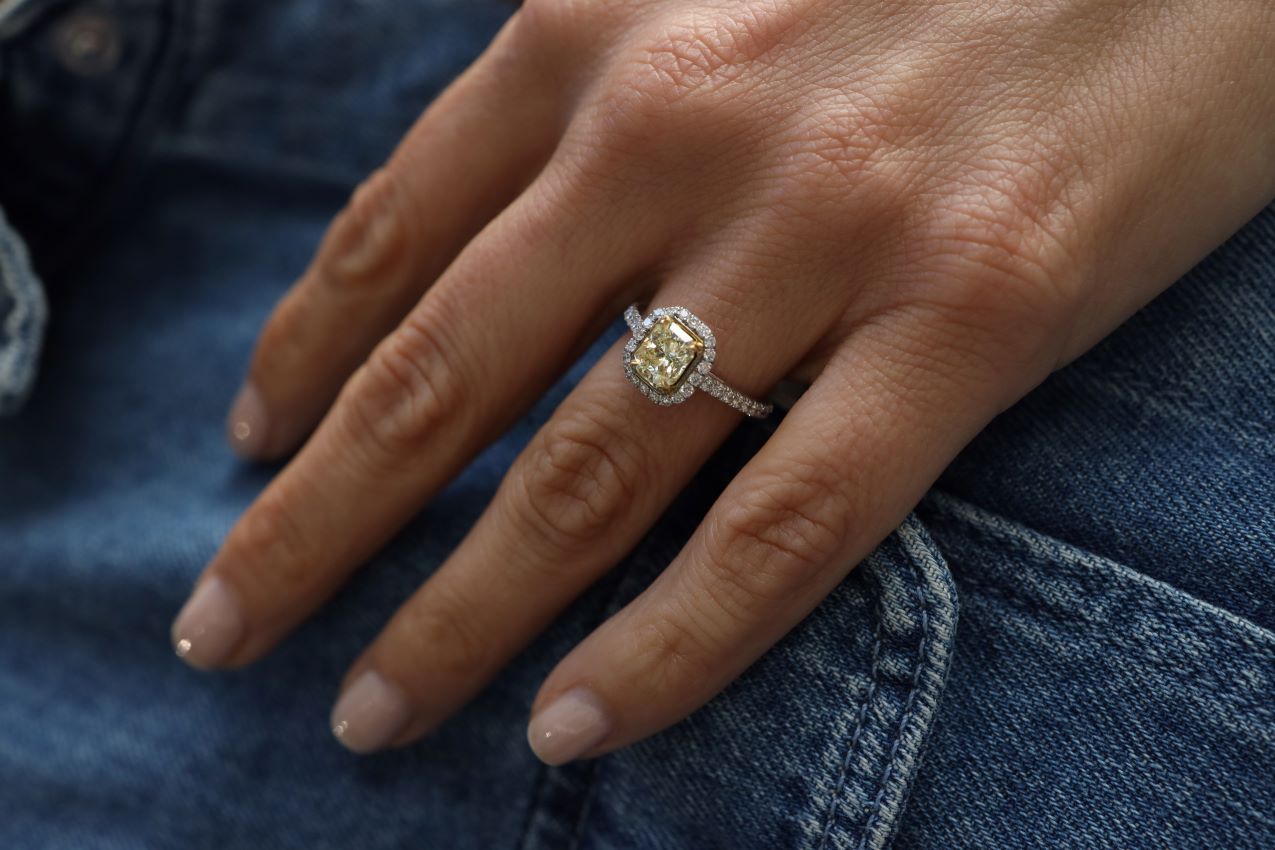
Carat: When talking about carats, yellow diamonds come in as the second most common among fancy coloured ones, but bagging larger sizes can be quite the quest. You'll often stumble upon yellow diamonds up to about 1.5-2 carats, but once you surpass that mark, the hunt gets trickier. Don't forget, it's not only about the size; the intensity of colour also shifts along with the carat weight.
Spotting yellow diamonds with a moderate colour intensity is simpler compared to finding those with the boldest hue. And similar to clear diamonds, the price shoots up significantly with every full carat, but the cost at each full carat heavily hinges on how deep the colour runs.
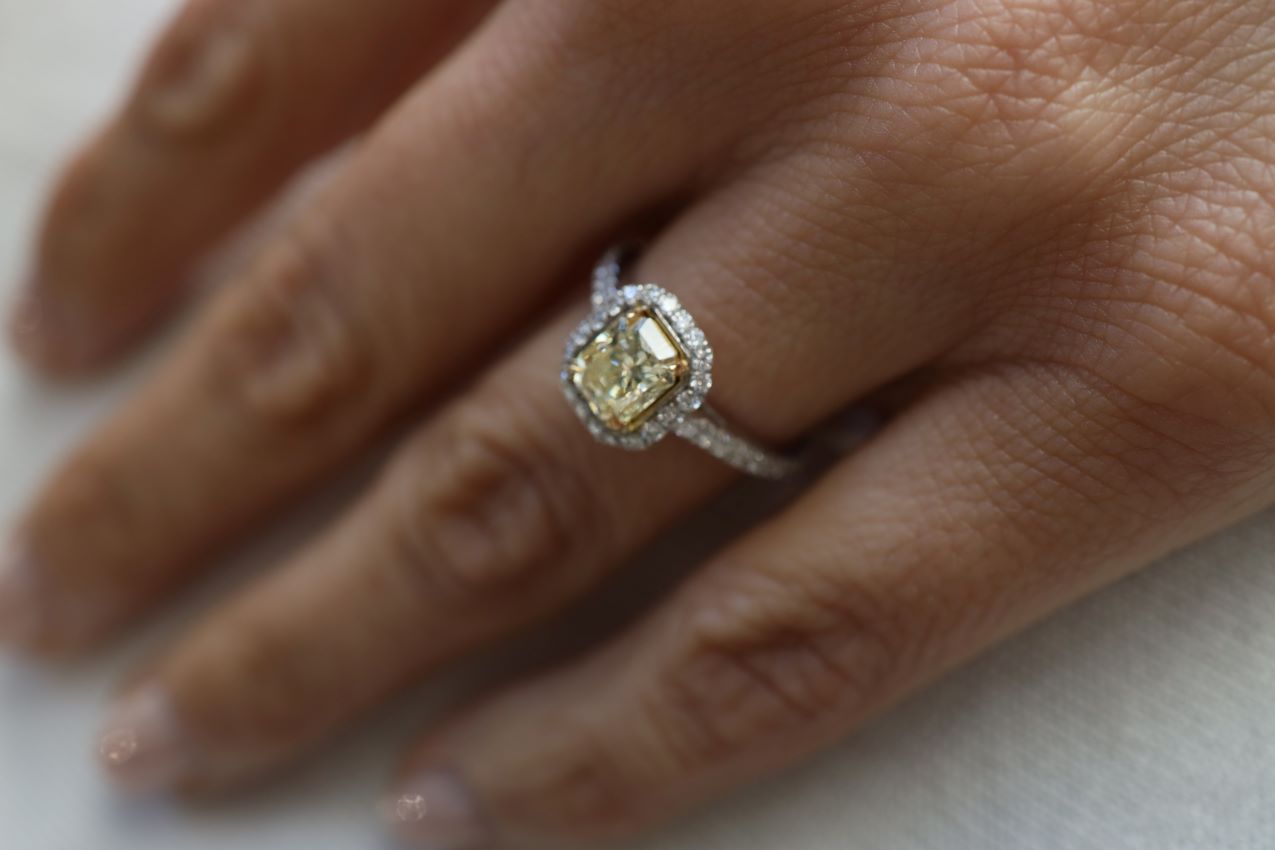
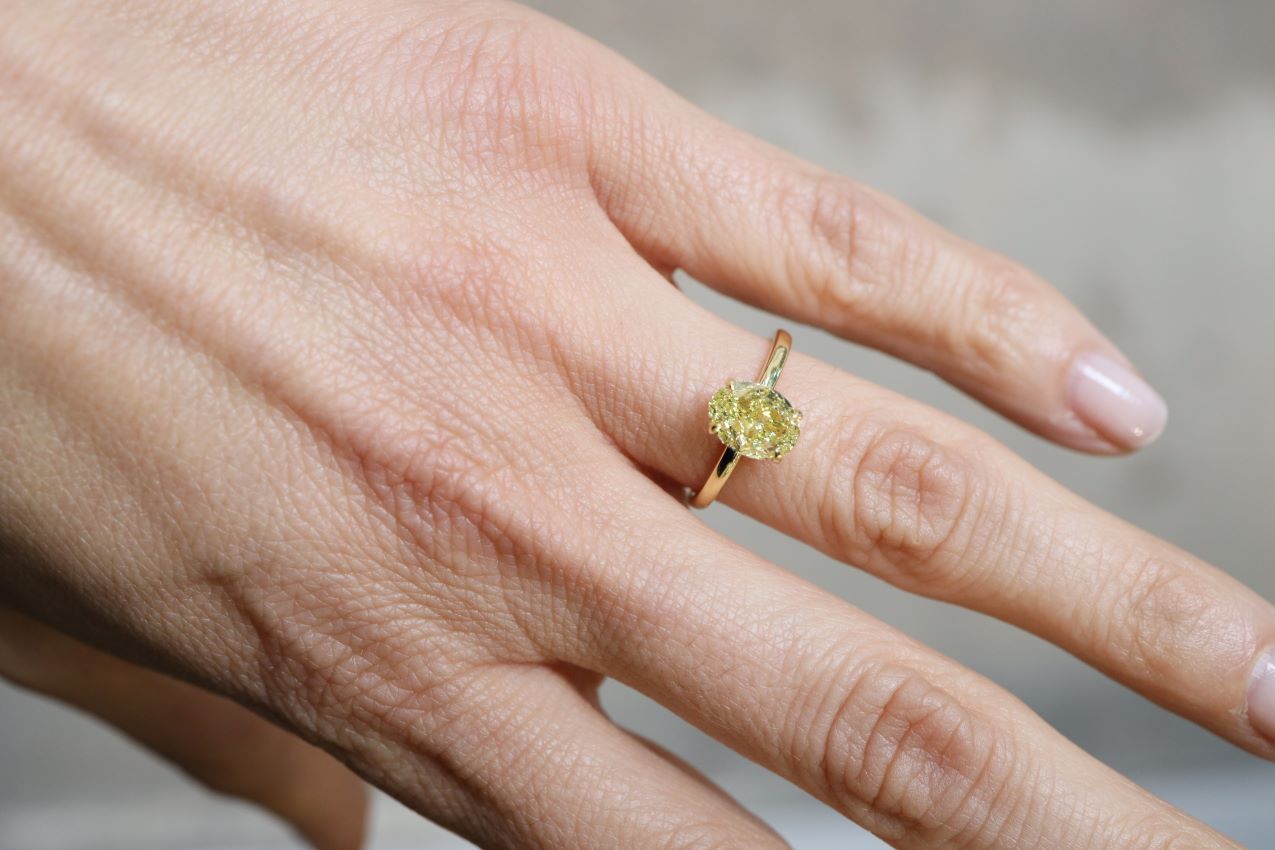
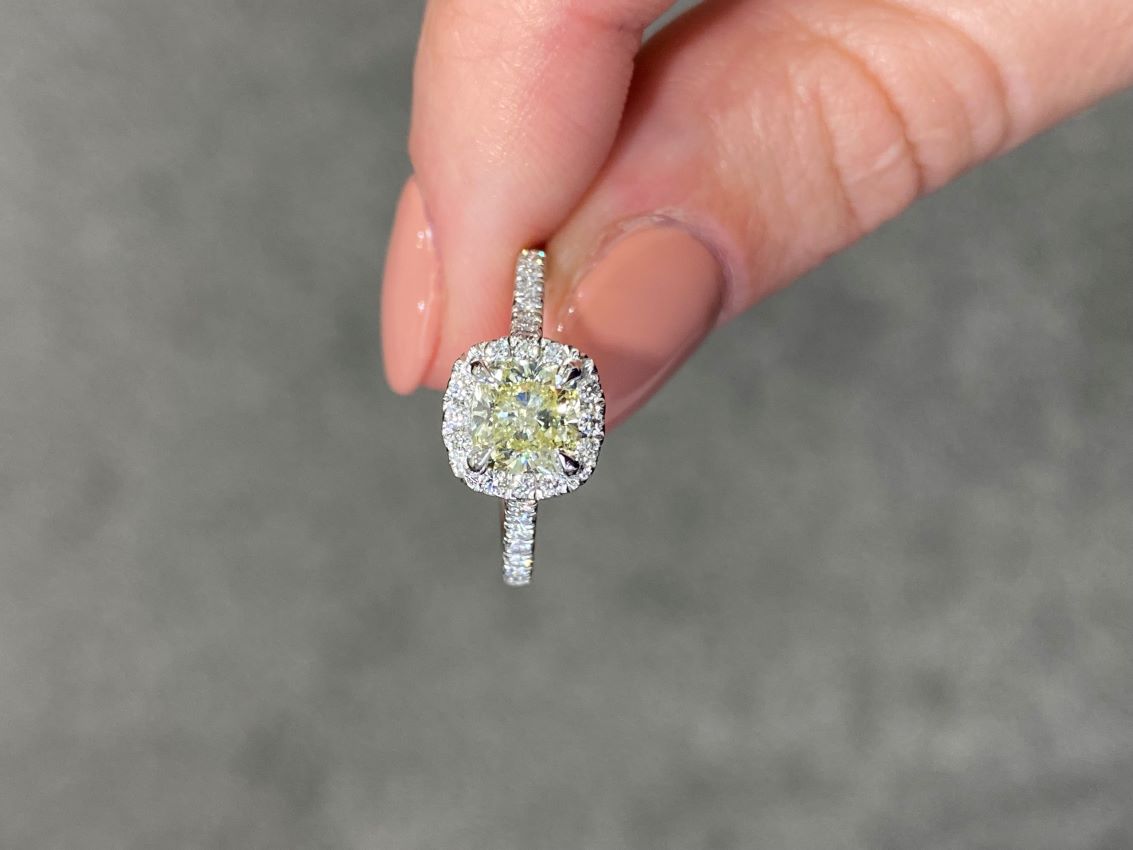
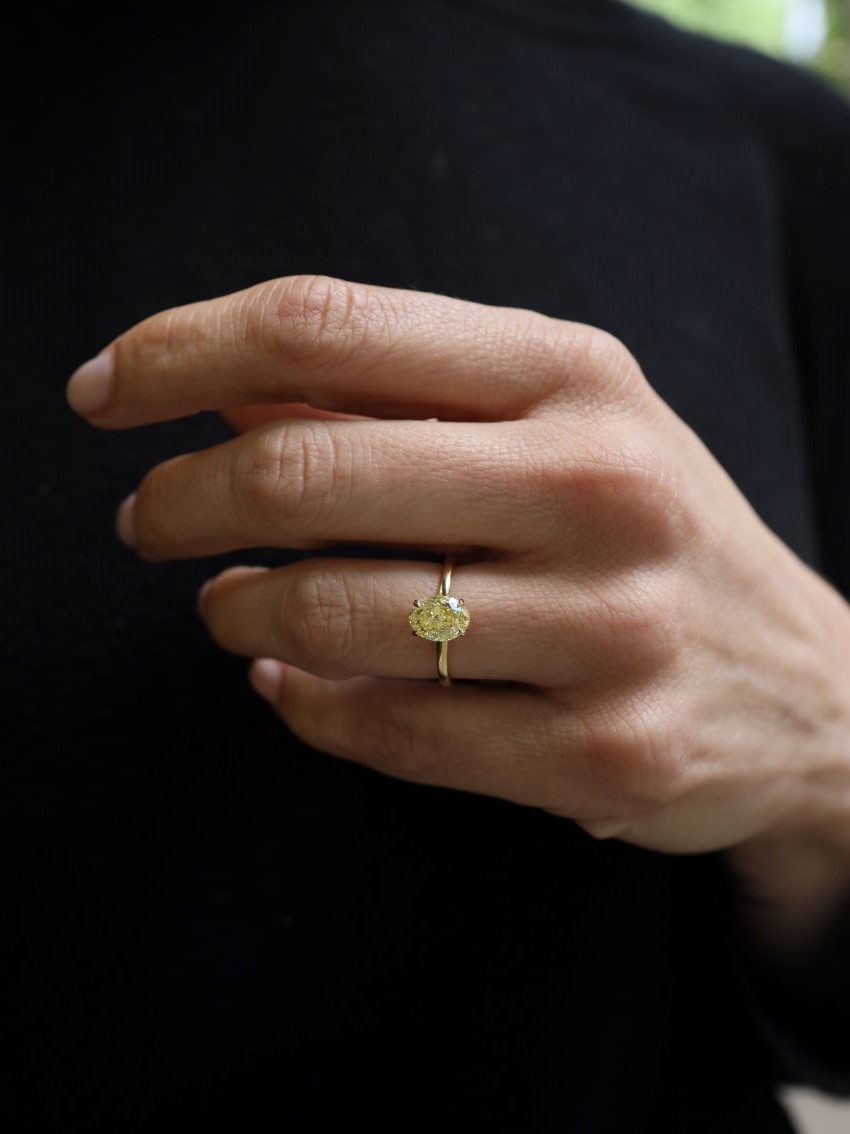
Yellow diamonds offer a special chance to play with contrasting or matching colours when designing a ring. Opting for platinum or white gold can create a striking contrast, making the yellow diamond shine even brighter. On the other hand, yellow or rose gold can enhance a lighter diamond, giving it a richer, warmer appearance beyond its grade.
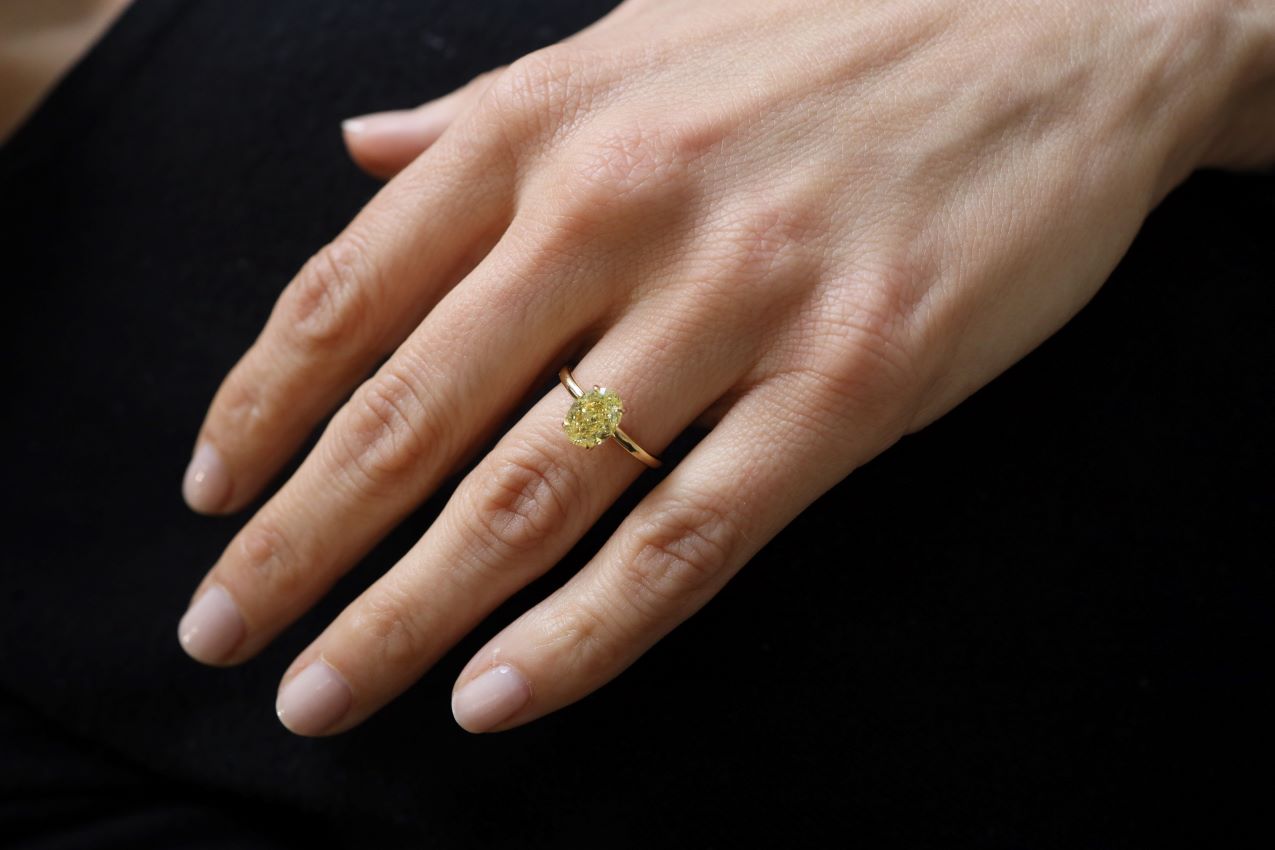
They definitely are! These gems are 100% authentic and utterly captivating. Not only do they boast realness, but they're also highly valuable, crafted through the same natural processes as their colourless counterparts.
The colour of a genuine yellow diamond will stay vibrant without any risk of fading, and there's no need for special upkeep to preserve its natural hue. Regular cleaning to remove dirt, creams, and other residues is essential for keeping your diamond looking its best, though.